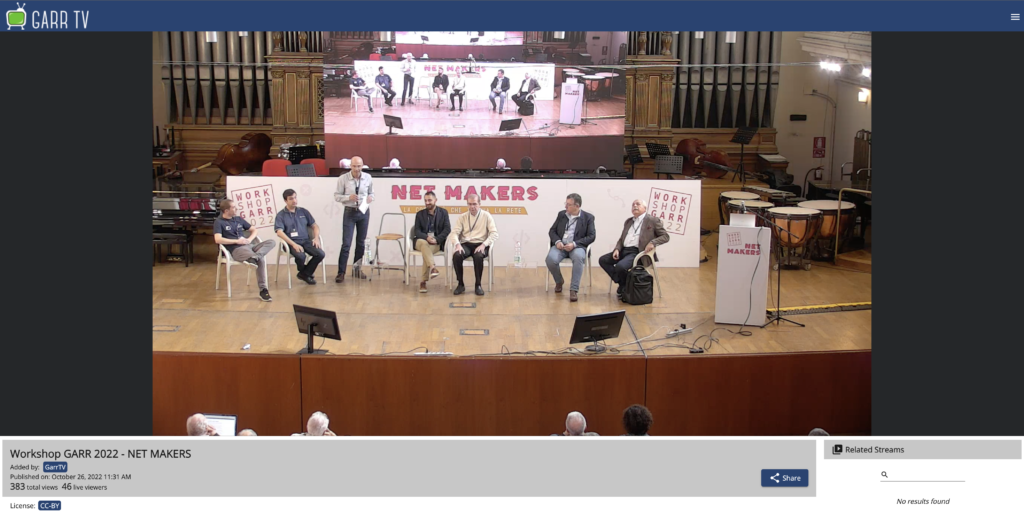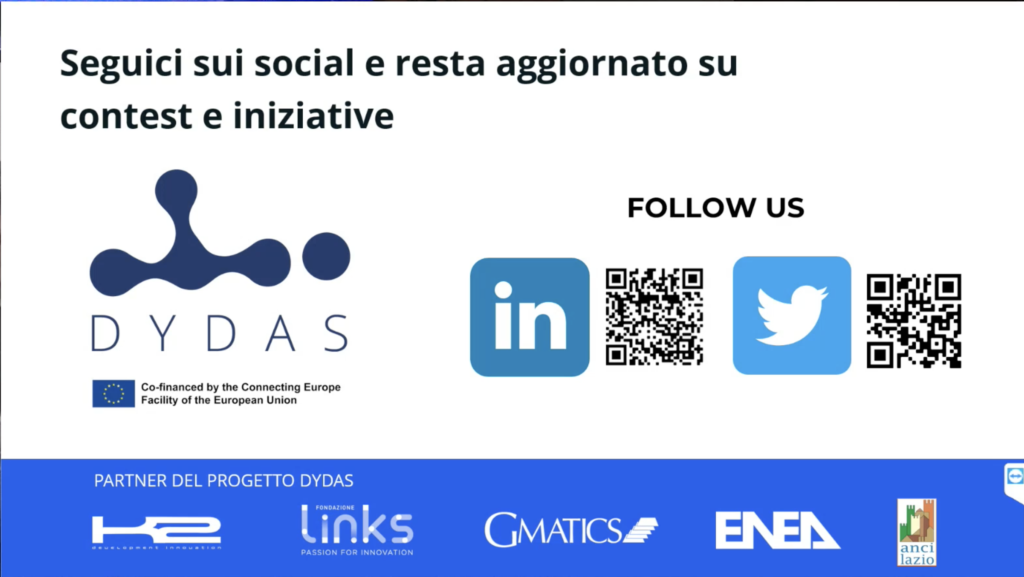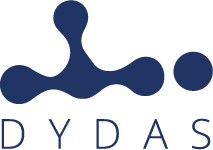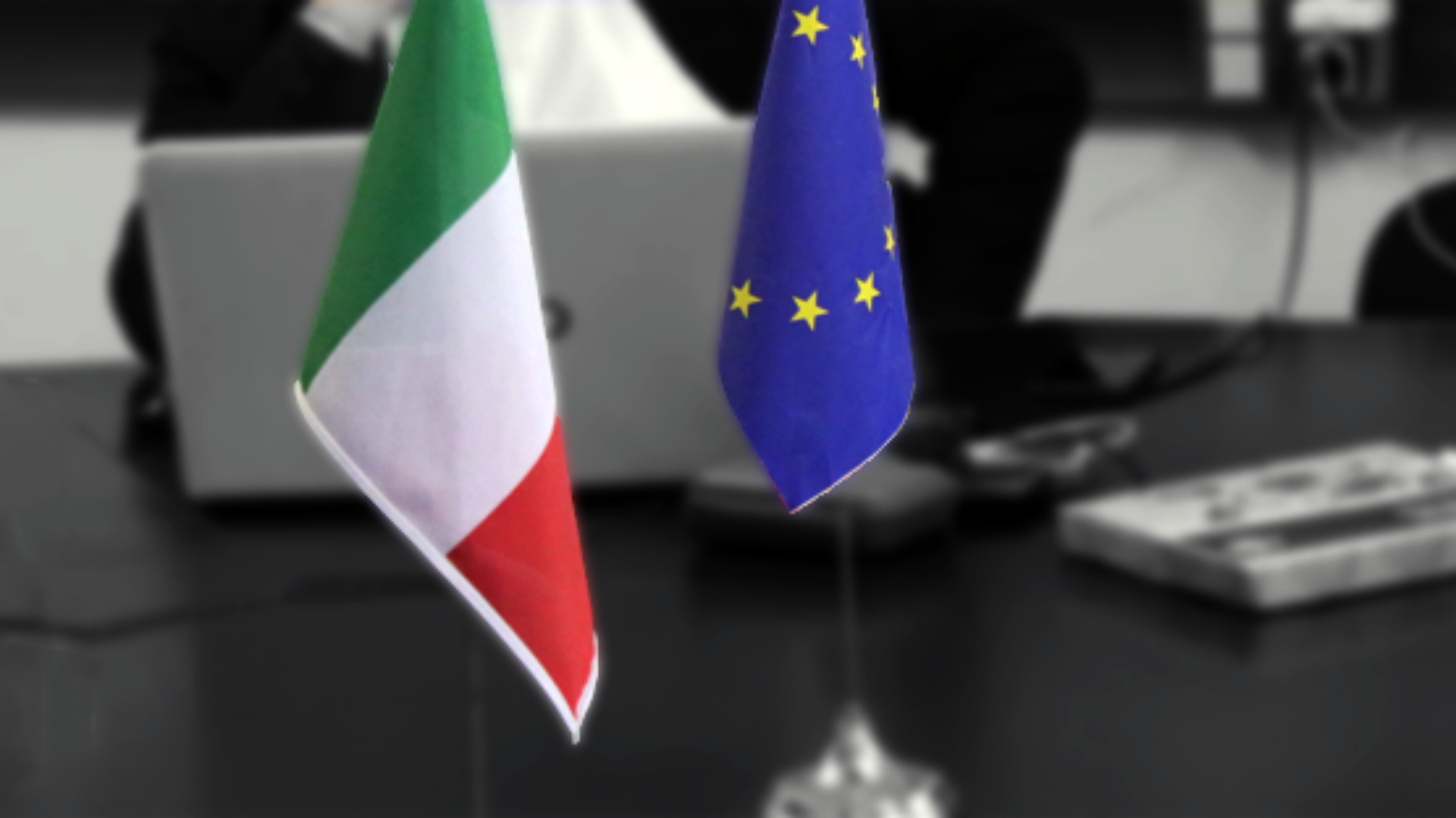
La piattaforma digitale collaborativa DYDAS, realizzata dall’omonimo progetto co-finanziato dal programma europeo CEF – Connecting Europe Facility, è stata presentata dall’ing. Marco Gatti davanti alla platea di ricercatori, esperti e uditori nell’ambito del workshop annuale promosso dal GARR.
L’ing. Marco Gatti ha illustrato come l’infrastruttura per il calcolo scientifico HPC (High Perfomance Computing) sia diventata abilitante per l’Open Science (termine con cui si indica il movimento culturale teso a rendere aperto ogni passo della ricerca scientifica) e, nel caso specifico del progetto DYDAS – DYnamic Data Analytics Services, nel quale si è realizzata la piattaforma digitale collaborativa DYDAS che offre lo strumento e-marketplace, si presenta un’occasione di sostenibilità economica anzitutto per tutto il settore scientifico.
L’ing. Gatti ha inteso evidenziare due fenomeni in atto per le PA e per le imprese. Un primo fenomeno legato alla modernizzazione dell’infrastruttura applicativa e l’utilizzo delle tecnologie abilitanti per l’accesso al mercato. Questa modernizzazione rappresentata dai Public Cloud (modello informatico in cui l’infrastruttura e i servizi di elaborazione on demand vengono gestiti da un provider di terze parti e condivisi con più organizzazioni che utilizzano la rete Internet pubblica) sta portando ad una vera e propria trasformazione e apertura delle organizzazioni verso quello che è il mondo della ricerca tecnologica.
La tecnologia High Perfomance Computing permette di elaborare grande quantità di dati al servizio della scienza e della ricerca e ciò consente sempre più ai data scientist di fare ricerca sul dato ed estrarre valore con algoritmi di intelligenza artificiale. l’HPC pertanto può abilitare le organizzazioni ad estrarre valore dai dati ma presenta talvolta alcuni limiti, primo fra tutti, nel caso sia realizzato in maniera privata, consiste nell’aver bisogno di un’infrastruttura dedicata e dunque di investimenti necessari prima di avviare il processo ed è un sistema tipicamente chiuso. Il Public Cloud ha completamente invertito quest’ultima tendenza e offre la possibilità di acquisire service specializzati su sistemi di intelligenza artificiale che possono riguardare la Computer Vision, il riconoscimento del linguaggio (NLP), il riconoscimento degli oggetti o analisi sui dati e, ad oggi, le aziende e le pubbliche amministrazioni stanno iniziando ad utilizzare questi servizi in maniera molto specifica.
L’approccio DYDAS va nella direzione dell’Open Science che si basa sulla possibilità di far cooperare e condividere informazioni e dati ed è promossa spesso dalla Commissione Europea anche tramite l’approccio Citizen Science. Le piattaforme tecnologiche HPC possono dunque rappresentare degli abilitatori fondamentali.
Su tale aspetto insiste anche la piattaforma digitale innovativa DYDAS. Con un partenariato Pubblico-Privato, coordinato da Key To Business Srl e con partner di rilievo quali l’ENEA, ANCI Lazio, la Fondazione LINKS e GMATICS si è andata a strutturare una piattaforma Open Science Native per estrarre valore aggiunto dai dati e dall’intelligenza artificiale costruito, messo a fattore comune della collettività, ovvero ottenuto in forma partecipata dalle imprese, centri di ricerca, Pubblica Amministrazione.
DYDAS pertanto è una piattaforma pensata per consentire di creare dei modelli matematici, preparare dei dataset e caricarli per condividerli e perfino – in prospettiva – di venderli su un apposito marketplace. La piattaforma elaborata è in questo momento a disposizione degli Early adopter e contiene informazioni su 3 casi d’uso, che riguardano rispettivamente un caso di computer vision a beneficio della mobilità, ovvero sono stati realizzati degli algoritmi di intelligenza artificiale che utilizzano dei raspberry, raccolgono dati sulla mobilità e li trasferiscono ad un sistema centrale per l’elaborazione successiva. Per esempio sono stati raccolti dati sullo stato del manto stradale, raccolti da auto in transito e inviati in maniera completamente anonima, tramite dataset, alla piattaforma DYDAS.
Un secondo caso d’uso curato da ENEA, riguarda gli algoritmi per la previsione dello stato di salute dei mari. Analogamente un terzo caso d’uso coordinato dalla LINK FOUNDATION ha riguardato il settore energetico, per il quale sono stati caricati modelli per la gestione energetica che sfrutta dati satellitari. Sono stati inoltre caricati un centinaio di altri dataset che sono a disposizione della collettività.
Stiamo cercando di sensibilizzare e stimolare tutti gli attori del settore della ricerca per caricare propri dataset e utilizzarli testando i propri modelli matematici con l’idea che un domani possano anche diventare monetizzabili.
La ricerca in questo modo può trovare degli sbocchi di mercato attraverso questo tipo di piattaforme, per fare in modo che gli algoritmi possano andare a beneficio dell’Open Science e avere anche un ritorno economico, stimolando l’incontro fra domanda e offerta.
Per stimolare ulteriormente i centri di ricerca e utilizzare la piattaforma DYDAS con scopi di beneficio per la collettività DYDAS propone attualmente:
- un Hackathon con scadenza per il 17 novembre 2022, che mette in competizione data scientist che vogliono misurarsi con la possibilità di ottimizzare i tempi semaforici per migliorare il traffico nelle grandi città. In palio un budget di 5mila euro.
- Una raccolta d’idee lanciata proprio nell’occasione del workshop GARR, con termine previsto per il 10 gennaio 2022 che invita i ricercatori ad inviare campioni di dataset accompagnati dalla proposta di utilizzi da parte della comunità scientifica. I tre campioni più interessanti saranno premiati nell’ambito della conferenza conclusiva del progetto DYDAS, prevista per il 24 gennaio 2023. Un evento dedicato a condividere e stimolare ulteriori progetti di ricerca attorno alla valorizzazione dei dati.
Ulteriori informazioni:

DYDAS presented at the “NET MAKERS” workshop GARR (Group for the Harmonization of the Research Network) 2022

The collaborative digital platform DYDAS, created by the homonymous project co-financed by the European program CEF – Connecting Europe Facility, was presented by Eng. Marco Gatti in front of the audience of researchers, experts and listeners as part of the annual workshop promoted by GARR.
Marco Gatti, engineer at Key to Business, illustrated how the infrastructure for scientific computing HPC (High Performance Computing) has become enabling for Open Science (a term used to indicate the cultural movement aimed at making every step of scientific research open) and, in the specific case of the DYDAS – DYnamic Data Analytics Services project, in which the collaborative digital platform DYDAS was created, which offers the e-marketplace tool, presents an opportunity for economic sustainability first of all for the entire scientific sector.
Eng. Gatti intended to highlight two phenomena underway for the PA and for businesses. A first phenomenon linked to the modernization of the application infrastructure and the use of enabling technologies for market access. This modernization represented by the Public Cloud (IT model in which the infrastructure and on-demand processing services are managed by a third-party provider and shared with multiple organizations that use the public Internet) is leading to a real transformation and opening. of organizations towards what is the world of technological research.
High Performance Computing technology allows to process large amounts of data at the service of science and research and this increasingly allows data scientists to research data and extract value with artificial intelligence algorithms. Therefore, HPC can enable organizations to extract value from data but sometimes has some limitations, first of all, if it is done privately, it consists in needing a dedicated infrastructure and therefore the necessary investments before starting the process and is a typically closed system. The Public Cloud has completely reversed this last trend and offers the possibility of acquiring specialized services on artificial intelligence systems that can concern Computer Vision, language recognition (NLP), object recognition or data analysis and, to date , companies and public administrations are starting to use these services in a very specific way.
The DYDAS approach goes in the direction of Open Science which is based on the possibility of cooperating and sharing information and data and is often promoted by the European Commission also through the Citizen Science approach. The HPC technological platforms can therefore represent fundamental enablers.
The innovative digital platform DYDAS also insists on this aspect. With a Public-Private partnership, coordinated by Key To Business Srl and with important partners such as ENEA, ANCI Lazio, the LINKS Foundation and GMATICS, an Open Science Native platform has been structured to extract added value from data and artificial intelligence built, made common to the community, or obtained in a participatory form by companies, research centers, Public Administration.
DYDAS is therefore a platform designed to allow you to create mathematical models, prepare datasets and upload them to share them and even – in perspective – to sell them on a special marketplace. The developed platform is currently available to Early adopters and contains information on 3 use cases, which respectively concern a case of computer vision for the benefit of mobility, i.e. artificial intelligence algorithms have been created that use raspberry, collect mobility data and transfer them to a central system for further processing. For example, data on the state of the road surface were collected, collected from cars in transit and sent in a completely anonymous way, via dataset, to the DYDAS platform.
A second use case edited by ENEA concerns the algorithms for the prediction of the state of health of the seas. Similarly, a third use case coordinated by LINK FOUNDATION concerned the energy sector, for which models for energy management using satellite data were uploaded. In addition, about a hundred other datasets have been uploaded and are available to the community.
We are trying to raise awareness and stimulate all actors in the research sector to upload their own datasets and use them by testing their mathematical models with the idea that one day they can also become monetizable.
In this way, research can find market outlets through this type of platform, to ensure that algorithms can benefit Open Science and also have an economic return, stimulating the meeting between supply and demand.
To further stimulate research centers and use the DYDAS platform for purposes of benefit for the community, DYDAS currently proposes:
- a Hackathon with a deadline of November 17, 2022, which pits data scientists who want to compete with the possibility of optimizing traffic light times to improve traffic in large cities. A budget of 5 thousand euros is up for grabs.
- A collection of ideas launched on the occasion of the GARR workshop, with a deadline set for January 10, 2022, which invites researchers to send dataset samples accompanied by a proposal for use by the scientific community. The three most interesting samples will be awarded in the context of the final conference of the DYDAS project, scheduled for January 24, 2023. An event dedicated to sharing and stimulating further research projects around the exploitation of data.
For further information:


